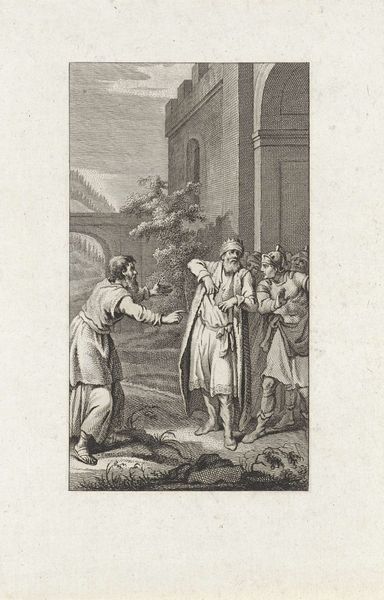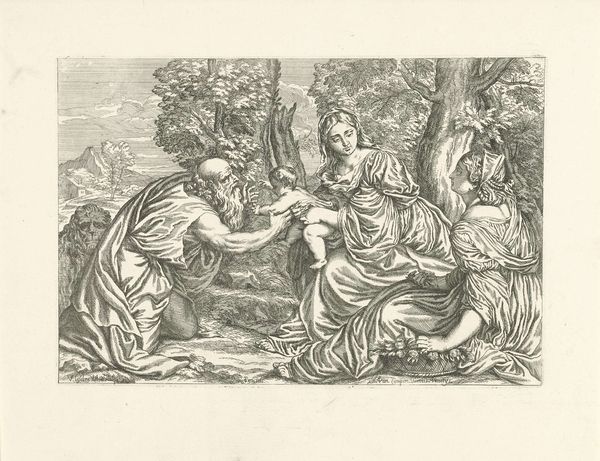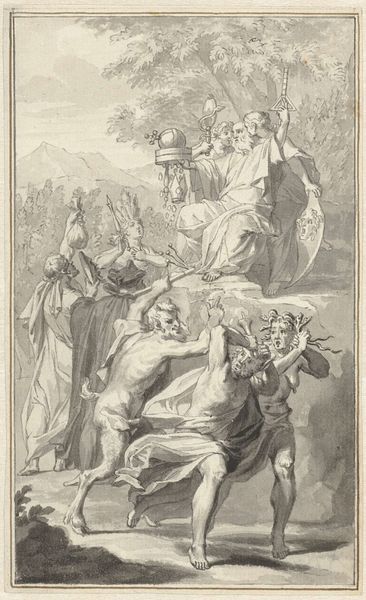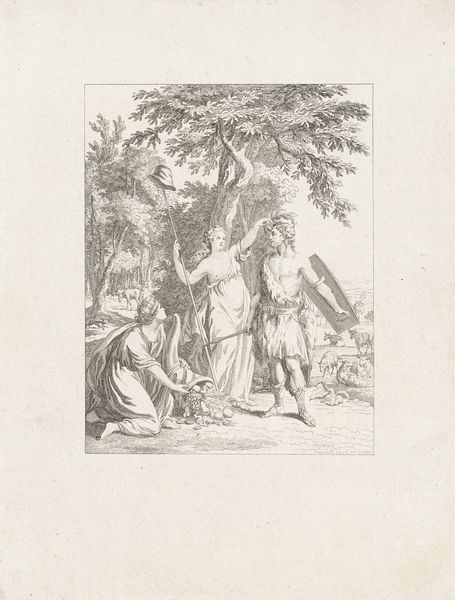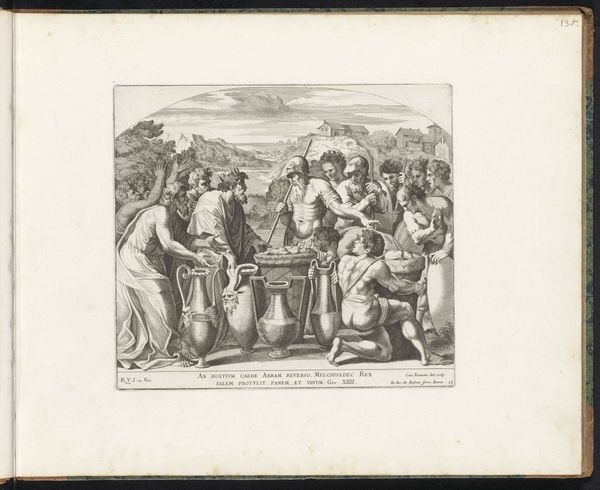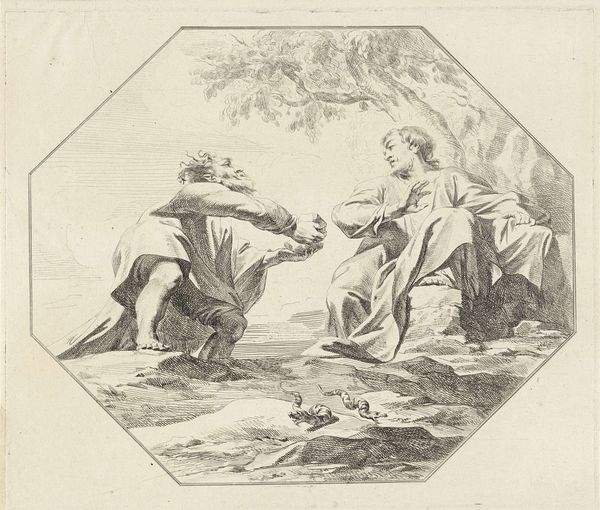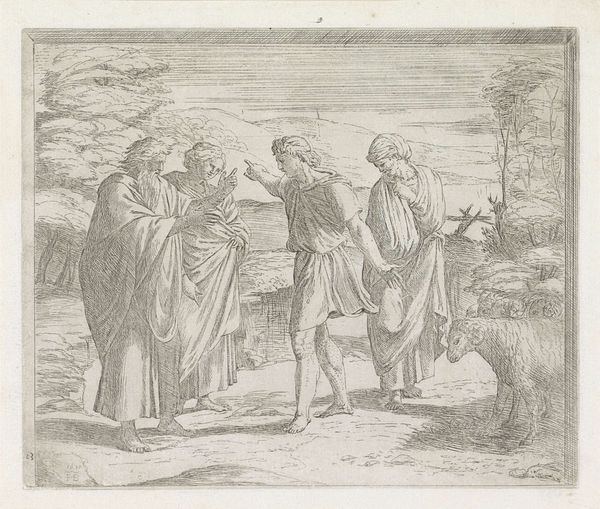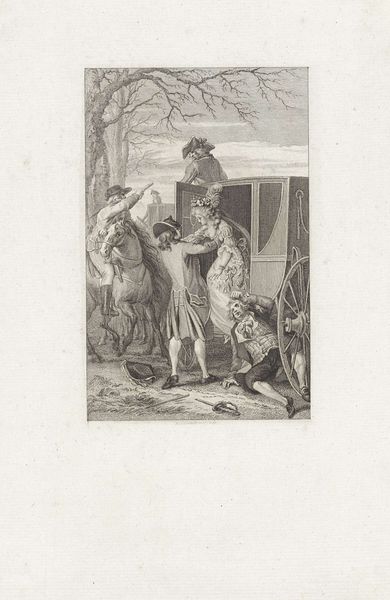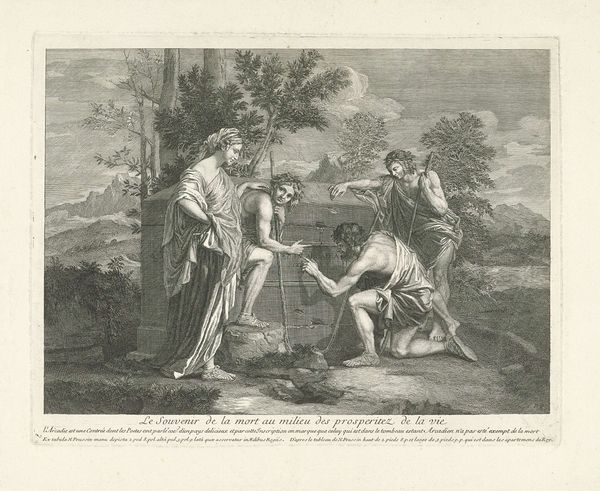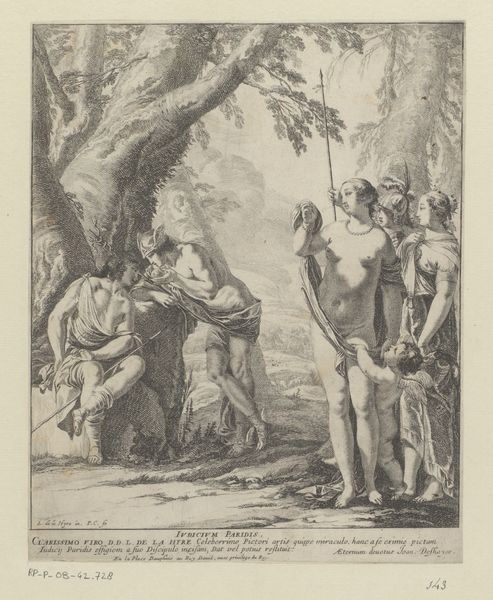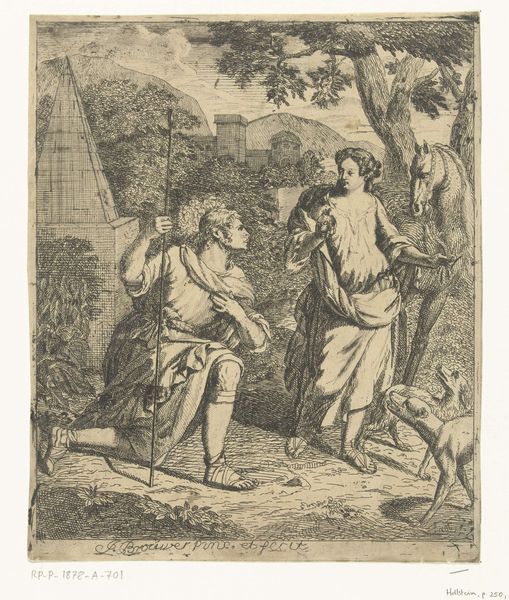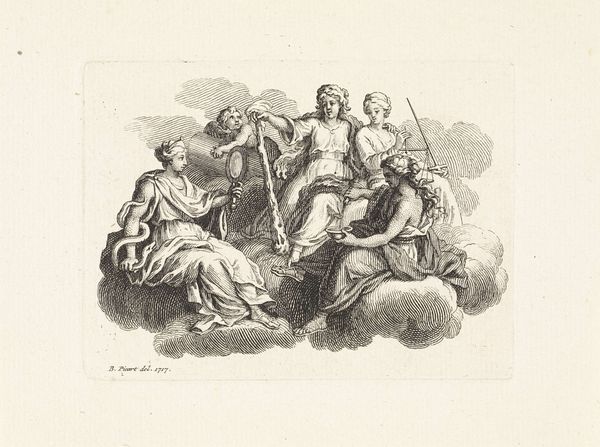
engraving
#
aged paper
#
dutch-golden-age
#
figuration
#
history-painting
#
engraving
Dimensions: height 209 mm, width 146 mm
Copyright: Rijks Museum: Open Domain
Curator: It strikes me as a rather stagey affair. All eyes are focused on the transaction happening between the kneeling man and the standing figures. There is a sense of imposed authority here, but also, what do you make of it? Editor: Well, looking at Reinier Vinkeles' "Bound Man Kneeling Before a Woman", an engraving done somewhere between 1751 and 1816 now housed here at the Rijksmuseum, what hits me first is the dramatic contrast between supplication and command, right? That kowtowing figure is just spilling vulnerability all over the place, a kind of abjectness. Curator: Abjectness indeed. The composition guides our reading. The figures arrange themselves according to power relations and, significantly, according to the conventions of history painting and figuration more broadly. But the kneeling figure's centrality makes me pause. He is not insignificant, his position paradoxically asserts importance. The gaze and the architectural backdrop serve as clear markers for interpreting the situation's significance. Editor: True. And the background with the palm trees suggests a specific place or perhaps even a narrative detail about conquest or diplomacy? Palm trees in this context almost shout 'exotic locale'. Is the woman rejecting or accepting the man’s plea? The line work creates such nuanced emotions on their faces. But beyond the stark power play depicted, isn't there also something deeply unsettling about how these visual dynamics echo throughout history, resonating with colonial narratives of submission and domination? It all seems very pointed. The artist is consciously presenting an imbalance in this scene. Curator: Precisely. The scene may depict not merely a transaction, but a symbolic clash of cultures. Vinkeles has masterfully employed etching techniques to generate emotional weight. The engraving possesses a palpable dramatic density. We must consider how form becomes the message itself here: a potent reminder that representation never neutrally reflects the world; instead, it produces it through aesthetics. Editor: Yes. It does become quite clear upon further inspection of the artwork. As if history itself were nothing more than beautifully etched shadows playing out on aged paper, and we’re left to ponder what it all means now. Thanks for giving me the insight.
Comments
No comments
Be the first to comment and join the conversation on the ultimate creative platform.
